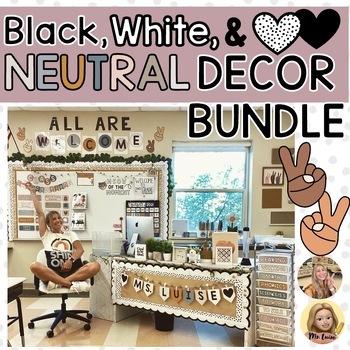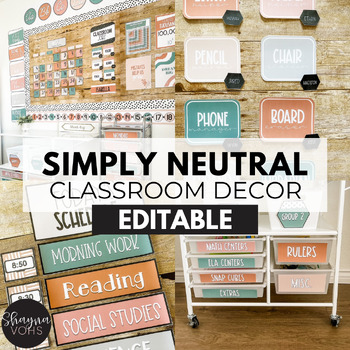Understanding Neutral Classroom Decor
As an educator with over a decade of experience, I’ve seen firsthand how the environment in which students learn can affect their focus and creativity. Neutral classroom decor provides a calming background that helps minimize distractions and fosters a more productive atmosphere. But what exactly does “neutral decor” mean for a classroom?
What is Neutral Decor?
Neutral decor typically refers to a color palette that includes whites, beige, grays, and soft pastels. These colors create a serene environment, allowing students to concentrate on their studies without overwhelming stimulation.
Why Choose Neutral Decor for Classrooms?
- Enhances focus and concentration
- Encourages creativity without distraction
- Fosters an inclusive and welcoming environment
Benefits of Neutral Classroom Decor
1. Improved Focus and Concentration
Neutral colors reduce visual noise, allowing students to concentrate on their lessons rather than the decor. In my teaching experience, I noticed that students were less fidgety and more engaged when the classroom featured muted tones.

2. Versatility in Design
Neutral palettes make it easier to combine decor elements. For example, you can mix different textures like wood, fabric, and metal without clashing colors, leading to a cohesive look.
3. Promotes Calmness
The calm nature of neutral colors can help reduce anxiety and create a peaceful learning environment, which is particularly beneficial for students with sensory sensitivities.

4. Easier to Update and Adapt
Neutral decor offers flexibility for seasonal changes or thematic lessons. You can easily add colorful accents or educational visuals without needing a complete redesign.
Implementing Neutral Decor: Tips and Ideas

1. Color Selection
Choosing the right neutral colors is crucial. Consider the following:
- Soft Whites: Great for walls and ceilings as they reflect light.
- Beige and Taupe: Warm neutrals that create a cozy atmosphere.
- Greys: Cool neutrals that add sophistication.
2. Furniture Choices
When selecting furniture, look for pieces that maintain the neutral theme:
- Wooden desks in light or medium tones
- Grey or beige seating options
- Multi-functional furniture to save space

3. Wall Decor
Art and visual aids can still be vibrant, but frame them in neutral colors. This allows for a balanced look while keeping the focus on the educational content.
4. Textiles and Accessories
Neutral textiles like curtains, rugs, and cushions can add warmth and texture without being overpowering. Choose fabrics that are easy to clean and maintain to ensure longevity.

Neutral Decor in Practice: Real-Life Examples
Classroom Layout Comparison
| Classroom Type | With Neutral Decor | With Bright Decor |
|---|---|---|
| Focus Level | High | Variable |
| Student Engagement | Consistent | Fluctuating |
| Classroom Mood | Calm | Overstimulating |
Case Study: My Experience with a Neutral Classroom
In one of my previous classrooms, I transitioned from a bright, colorful space to a more neutral-toned room. The change was remarkable. Students reported feeling less anxious, and I noticed an increase in collaborative work and discussions. The environment felt more grounded, which is essential for effective learning.

Challenges of Neutral Classroom Decor
1. Risk of Blandness
If not designed thoughtfully, neutral decor can feel dull. It’s essential to incorporate variety through textures and shapes.

2. Maintaining Interest
Neutral colors can sometimes lead to disengagement if not paired with engaging materials. Use colorful educational materials to liven up the space.
3. Initial Cost
Investing in neutral furniture and decor can sometimes have a higher initial cost, but it can lead to long-term savings and durability.
Pros and Cons Summary
| Pros | Cons |
|---|---|
| Calm and Focused Environment | Can be perceived as dull if not designed well |
| Versatile for Seasonal Changes | Initial investment costs may be higher |
| Easy to Mix and Match | Requires creativity to keep it engaging |
FAQs About Neutral Classroom Decor
1. What colors are considered neutral for a classroom?
Neutral colors include whites, beiges, grays, soft browns, and muted pastels.
2. How can I add color to a neutral classroom?
You can add color through artwork, educational posters, and colorful accessories like cushions or rugs.
3. Are neutral colors better for younger children?
Neutral colors can help create a calm environment, which is beneficial for children of all ages. However, a balance with vibrant colors can cater to younger children’s need for stimulation.
4. What textures work well with neutral decor?
Textures like wood, soft fabrics, and metal can add depth and interest to neutral spaces without overwhelming the senses.